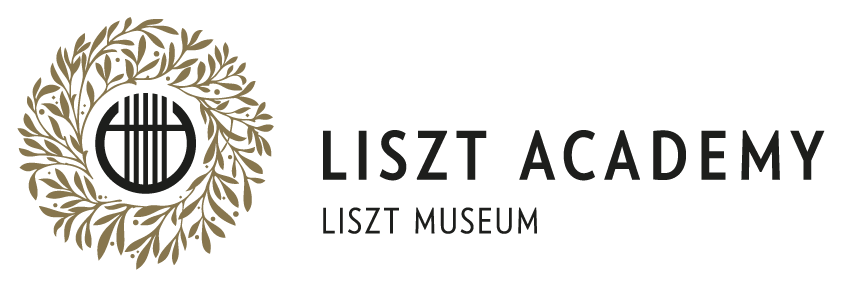Dining room
Here periodic exhibitions are organized owing to the fact that neither furniture nor description of this room have remained. The richness of the collection of the Liszt Ferenc Memorial Museum enables us to fill the show-cases from time to time with varying pictures, documentation, manuscripts, plaquettes and other objects to do with Liszt and his circle. For our thematic exhibitions we often borrow additional material from other collections.

The piano, which can be seen here, was manufactured by the Boston company Chickering. Jonas Chickering's (1798-1853) most important patent was the cast-iron frame /1840-43/ which gave the instrument a greater stability and a richer sound. The American company after the death of the founder also had great success. His long concert-piano Opus 30.540 with English mechanism won a gold medal at the World Fair of Paris in 1867, and even its manufacturer Mr. Charles Francis Chickering was awarded the Legion of Honour by the Emperor Napoleon III. The prize-winning instrument of 7 1/3 octaves volume, straight strung, with 2 pedals, and decorative on the outside as well /with a case made of rosewood, and with carved and bent legs/ was taken by Chickering himself to Rome at Christmas 1872 for Liszt. Altough the instrument was highly appreciated by the Romans, Liszt - possessing no permanent residence in Rome - had problems to place the piano, with its dimensions of 254 cm long and 147 cm wide. In 1872 it was transported to the country-house of his Hungarian friend Baron Antal Augusz in Szekszard, where previously himself had been a guest several times. Only after Liszt's death, in April 1887 was it delivered to the Academy of Music. The widow of Baron Augusz gave it to the Liszt estate in Budapest /together with the glass-piano in her keeping/.
The water-colour caricature of Liszt above the glass show-cases is by Arpad Szendy, after a drawing by Georg Henschel. On the picture Liszt is portrayed with a pince-nez on his nose. Arpad Szendy was a student of Liszt between 1883 and1884, and later on became a teacher at the Academy of Music, and together with Istvan Thoman, was one of the most representative inheritors of the Liszt-tradition in Hungary.



